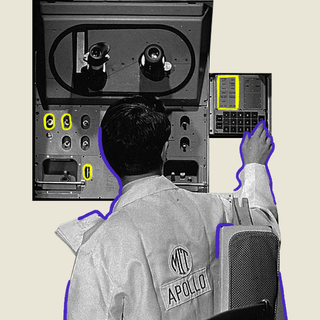Most of us have heard of the legend of Icarus, the character from Greek mythology who flew so close to the Sun that his wings melted, and he fell to death. NASA, however, has finally achieved what Icarus could not.
This year, its solar probe didn’t just go close to the Sun, but also “touched” it — and managed to live long enough to tell the tale.
“For the first time in history, a spacecraft has touched the Sun. NASA’s Parker Solar Probe has now flown through the Sun’s upper atmosphere — the corona — and sampled particles and magnetic fields there,” NASA announced. In other words, this is the first time any human-made element has entered the solar atmosphere.
NASA achieved the almost impossible feat 60 years after it set the goal to do so, and three years following the launch of Parker in 2018. Published on Tuesday in Physical Review Letters, a study details Parker‘s entry into the magnetized atmosphere of the Sun.
“We were fully expecting that, sooner or later, we would encounter the corona for at least a short duration of time… But it is very exciting that we’ve already reached it,” said Justin Kasper, a professor in the Department of Climate and Space Sciences and Engineering at the University of Michigan, who led the study.
The objective behind the mission is to get a better understanding of the Sun’s magnetic fields and gather sample particles. “Not only does this milestone provide us with deeper insights into our Sun’s evolution and its impacts on our solar system, but everything we learn about our own star also teaches us more about stars in the rest of the universe,” Thomas Zurbuchen, associate administrator for the Science Mission Directorate at the NASA Headquarters in Washington, explained.
Related on The Swaddle:
New Research Suggests Water on Earth May Have Come From the Sun
“This is a huge milestone,” Craig DeForest, a solar physicist at the Southwest Research Institute in Boulder, Colorado, who is not involved with the mission, told Nature. Flying into the solar corona represents “one of the last great unknowns.”
Unlike the Earth, the Sun doesn’t have a solid surface. Instead, it contains a superheated atmosphere comprising solar material that is kept in place by magnetic and gravitational forces. “The corona is one million degrees Kelvin (1,800,000 degrees Fahrenheit) at its hottest point, while the surface is around 6,000 Kelvin (10,340 degrees Fahrenheit),” an article on CNN explains.
“Flying so close to the Sun, Parker Solar Probe now senses conditions in the magnetically dominated layer of the solar atmosphere — the corona — that we never could before… We see evidence of being in the corona in magnetic field data, solar wind data, and visually in images,” Nour Raouafi, the Parker project scientist at the Johns Hopkins Applied Physics Laboratory in Laurel, Maryland, said. “We can actually see the spacecraft flying through coronal structures that can be observed during a total solar eclipse.”
Moreover, the spacecraft also discovered “bizarre kinks” in the magnetic field of the solar wind, known as switchbacks, while inside the corona. “Knowing how such features form on the Sun, and how they influence the solar wind and other eruptions of charged particles, will help people on Earth better prepare for disruptive space weather, such as when solar storms knock out satellite communications,” Nature noted.
The probe actually flew through the sun’s corona — its upper atmosphere — in April during its eighth close approach to the Sun. However, it took scientists a few months to collate the data, and a few more to confirm that the probe had actually succeeded in venturing into the star that sustains us.
The words of Nicola Fox, director of NASA’s heliophysics division, ring loud. “We have finally arrived. Humanity has touched the Sun.”




